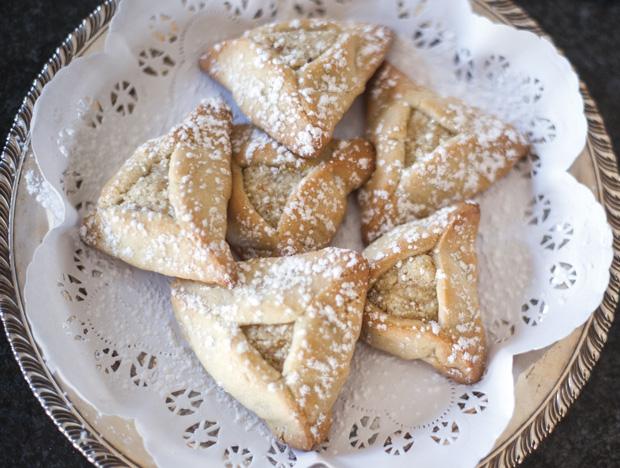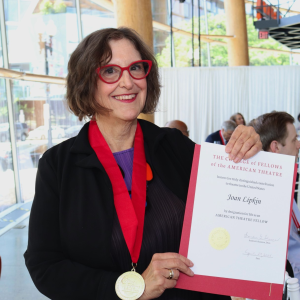A Royal Hamantaschen
Published March 5, 2014
With Purim just a couple weeks away, my mind is once again churning through the possibilities for new and improved hamantaschen. Don’t get me wrong. I concede that listening to a reading of the Megillah with its accompanying cacophony of groggers or parading around in colorful costumes and throwing back shot-glasses of your favorite liqueur or gathering with family and friends for a festive meal (seudah) or distributing mishloah manot baskets (gifts of food for friends and those less fortunate), is more significant than that iconic filled pastry in the triangular shape of the hat of the evil Haman.
Yet for most of us, hamantaschen are Purim’s most recognizable symbol. We cherish childhood memories of mixing, rolling and filling those pastries with our mothers or grandmothers or at Sunday School with our teachers. We can recall, as young kids or even adults, the anticipation of biting into one of those jeweled triangles in our shul or temple auditorium following the reading of the Megillah.
Just about now, we start to see hamantaschen displays in our local supermarkets, and rows and rows of them in the windows and cases of some of the best bakeries in our town (or, for that matter, in towns around the world). Indeed, El Al Airlines has sponsored an annual “Hamantaschen Eating Contest,” with the winner receiving a free round-trip ticket to Israel. When hamantaschen become the centerpiece of a commercial promotion like that, you know that this triangular pastry is an important symbol of Purim.
Each of us has eaten enough of these pastries over the years to have developed our own preferences: big versus small, hard versus soft, fruit filled versus poppy-seed filled versus one of those new-fangled fillings like PBJ or crème brûlée. And while family traditions may have shaped your preferences, the very existence of Nutella-filled hamantaschen (a version not at the holiday table of our great-grandparents) shows our willingness to be adventurous.
I am eager to report that my kitchen experiments over the past month have not been in vain. What has emerged is an elegant and delicious hamantaschen that is worthy of being served on your finest silver or china platter, lined with a lace doily. This is a royal, ambrosial pastry, fit for Queen Esther.
My muse for this hamantaschen was my son-in-law Chris Hecht. Upon biting into one of my homemade croissant bear claws, he exclaimed,” Oh my. I have never tasted anything as incredible as this filling. What is it?”
So began my quest to create a recipe for dough worthy of encasing this incredibly rich and delectable almond-coconut filling. The results of that quest are below. The dough is easy to make, easy to handle, and has a pleasant citrusy flavor. Unlike a yeast-risen dough, this one bakes up crisp rather than soft. And while it might be faster to use the contents of a can of Solo Almond Cake and Pastry Filling (where corn syrup and sugar are the first two ingredients) to fill that dough, resist that temptation. The canned version can’t compare to the homemade one below.
Follow the directions for chilling the dough and then for chilling the filled pastries before baking them. This will prevent your hamantaschen from collapsing or shrinking as they bake. Also, don’t omit the orange zest in either the pastry or the filling; it makes the two parts delightfully compatible.
If you do not happen to have cake crumbs handy and would rather not run out to the bakery, you can substitute one cup minus a tablespoon of fresh breadcrumbs tossed with a teaspoon or two of granulated sugar and a tablespoon of ground almonds. (In the future, when you bake a pound cake or yellow cup cakes, put the leftovers in a food processor and turn them into crumbs. The crumbs can be stored in the freezer for six months and used to thicken fruit or nut pie or tart filling, and can be toasted and served atop your favorite ice cream sundae or pudding.)
Before serving this royal pastry, consider dusting each one with powdered sugar or drizzling it with a zig-zag pattern of melted premium bittersweet chocolate (let the chocolate set before serving)-sublime elegance!
Chag Sameach.
Margi Lenga Kahn is the mother of five and grandmother of five. A cooking instructor at the Kitchen Conservatory, she is currently working on a project to preserve the stories and recipes of heritage cooks. She welcomes your comments and suggestions at [email protected].















